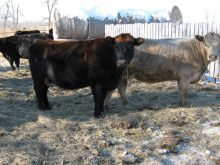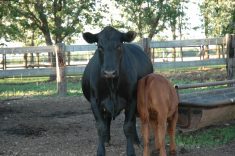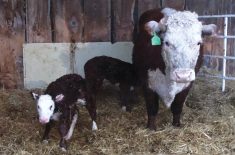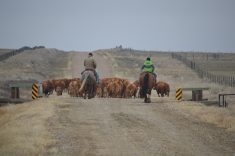Several methods can help preserve feed quality and reduce moisture damage in your winter hay supply. Warren Rusche, feedlot and beef management specialist with South Dakota State University, says the ideal way to store hay is under cover in a shed, but this works best for square bales. It’s usually not practical for round bales that take up more space.
“If we’re not going to put hay under roof, we need a well-drained site to avoid spoilage on the bottom,” he says. “Gravel or some kind of base under the hay that will drain keeps bales from soaking up water.”
In snow country, avoid low areas that will be wet with snow melt, and away from trees to allow more air movement to keep things dry, and avoid catching more snow. “If it catches much snow, we have to dig the hay out to feed it, and when all that snow melts it puts that moisture next to our hay,” Rusche says.
Read Also
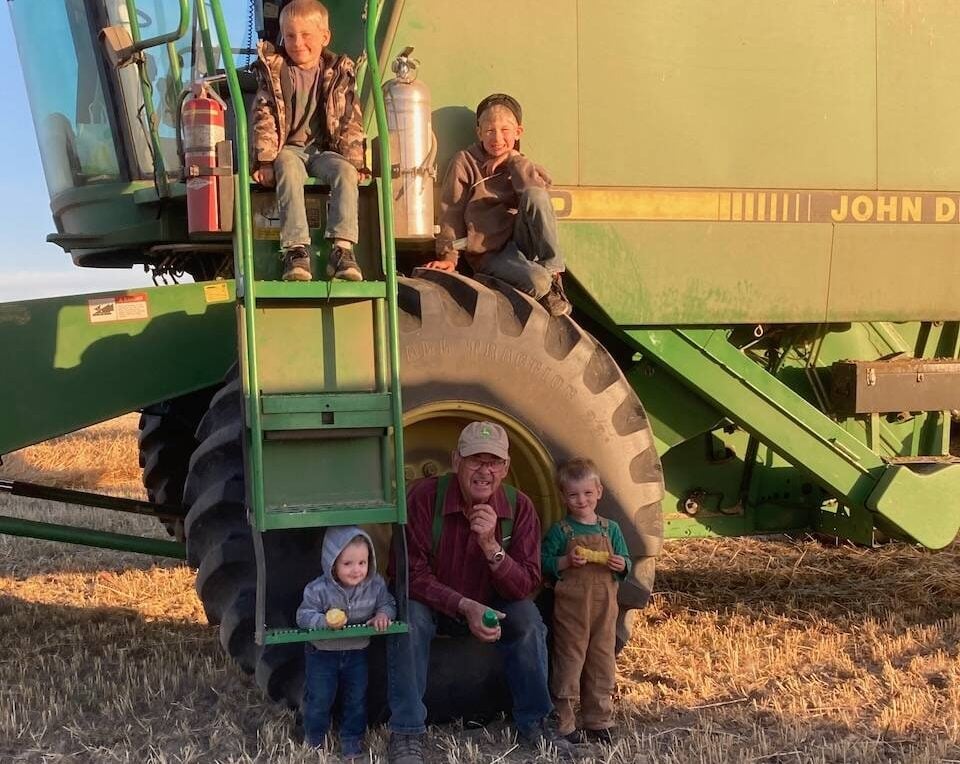
Harvest wraps up and fall work begins
At the Eppich famly ranch in western Saskatchewan, the fall harvest was successful with few breakdowns, cows and calves have been sorted and a new tractor has arrived
Many hay producers make big round bales, which can be a challenge to store. “My preference, if I have room, is to store them in long single-bale rows with the flat sides touching each other and round side up, and run those rows run north to south so there’s sun exposure on both sides. You want fairly wide gaps between the rows, for more air movement.”
Minimize snow
If there’s a lot of snow, it can slide off between the rows with enough room to not pile up so deeply between them; snow won’t stay against the sides of the bales as long.
“When there’s a lot of snow, with bales in a single row, we can pull the bales off that row and only have to open up a small area — as opposed to trying to get at stacks. If there’s limited space, however, we have to stack them,” Rusche says.
If bales are to be stacked, figure out how long they have to be stored and which bales you’ll use first. Decide if it is hay to be used in early winter, or is it hay that will be fed to weaned calves in the fall — fed between October and January for example. Is there a way to cut corners on storage, because shrink on hay stored only a few months will be modest.
Prioritize the storage plan. “The longer you need to keep hay, the more protected it should be so it won’t weather so much,” says Rusche. “If you have covered storage available, put the highest-quality feed under roof, especially if it needs to hold its quality until spring.” Lower-value rained-on grass hay can be stored outside.
It’s not necessary to have four walls for a hay shed; a roof alone will help prevent moisture buildup and losses, Rusche says. It’s also important to know how much precipitation you get. In an arid climate, the risk of hay loss is lower when figuring whether a hay shed pencils out. But even in an arid climate, there may be brief heavy rains that soak deeply into the bales, or an unusual year where there is more snow than normal.
Different covering materials
Some people tarp hay rather than invest in a hay shed. Hay can be tarped anywhere. It may be easier to invest in a few tarps, canvas cover, or rolls of black plastic that can be reused for several years. Black plastic lasts longer than most tarps, is cheaper, and can be cut to fit the stacks. Black plastic is slicker — and warmer from absorbing sunshine — and snow sheds off better.
Compared to tarping a pyramid stack, it’s easier with long single rows or even rows of single bales placed on top of single bales. When taking tarps or black plastic off in winter, the covering comes off single rows easily, whereas a pyramid stack or rows placed tightly together will have dips and valleys where water or snow melt collects and creates heavy chunks of ice.
“Pyramid stacks have more problems in general because there are more places for water to collect and sink into the hay,” says Rusche. “If we place bales flat side to flat side in long rows of single bales, the water sheds off.”
When space is limited, people usually put round bales in rows with a sideways bale on top of each upright bale, or make a pyramid stack. Rusche says Kansas State University looked at putting a bale on end and other bale on top of it. Shrink loss was similar to what they saw in single rows. A study in South Dakota looked at storage losses in pyramid stacks (a base of three with a layer of two on those and a third bale on top) and found 10 per cent loss in one year. A single bale with air around it had storage loss of four per cent and when placed end to end in long rows the loss was under one per cent.
Making hay bales with proper bale density is also important. Loosely-packed hay allows more moisture to penetrate, and there’s also more oxygen available for microbes to utilize and break down the nutrients. One way to check bale density is to press your palm against it. If you can press the bale inward by more than half an inch, the bale is too loose and you should expect more hay loss.
If hay is stored outside, it should be on high, well-drained ground or up on pallets, old tires, bricks, railroad ties, or old fence posts — anything to keep hay off the ground.





